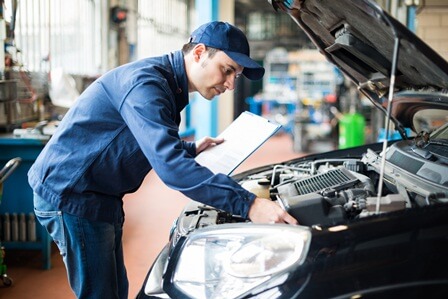More and more people are now choosing to buy used cars instead of brand new because it’s more practical and saves them a lot of money. An extended car warranty is usually offered or already included in the sale.
When You’re Protected On a Bad Deal
The first thing that you need to do when you happen to buy a used car that breaks down soon after your purchase is to contact your dealer. You can either ask them for a refund or have the car repaired.
This is the advantage when you buy from a car dealer compared to a private seller. Vehicles sold by car dealers are more expensive compared to the private seller since they’re liable in case an issue arises upon purchase.
Implied Warranty
Implied Warranties are the unspoken, unwritten promises that hold the dealer responsible in case they sold a subpar quality vehicle. Car dealers in some states use the word “as is” to remove implied warranty, this means that the car is sold together with all faults/issues within the car. But just because implied warranties exist, doesn’t mean you can go on a claiming spree once your car breaks down. There are certain rules to follow.
When You’re Not Protected On a Bad Deal
1. You Decided That You Didn’t Want the Car Anymore
Just because you change your mind about your purchased car does not mean that you can cancel the sale and return it because you saw a better deal with another car dealer. There is no cooling-off period when it comes to purchasing cars. So before you decide to invest in a used car, make sure that you’ve done your research and considered everything on the plate.
2. You Caused the Problem
If you bought a used car and later found out that it has some issues without your knowledge, then you can contact your dealer and have it repaired or ask for a refund. In the case where the issue was your fault, then you won’t be entitled to any compensation.
3. You Were Already Told About the Issue
Before a car dealer can put a “For Sale” sign on a used car, they are required by the Federal Trade Commission (FTC) to provide a Buyer’s Guide. A Buyer’s Guide is a document that discloses important information about the car including issues that you should look out for. When even with the proper disclosure of information given by the dealer, you still chose to buy the car and the issue eventually comes out, then you’re not entitled to bring your car back and ask for a refund.
4. You Didn’t Do a Thorough Inspection
You don’t have to be a mechanic to be able to inspect a visible issue on the car – say a dent. Unless it’s a major engine problem that only a mechanic would be able to inspect or when you’ve driven it long enough to be able to assess an issue, then you won’t be able to get protected.
How to Avoid Bad Deals on a Used Car
Do a Test Drive. Check to see if there are no issues when you drive the vehicle. Check everything from the dashboard to the seatbelt to how the controls feel.
Check The Car. Examine the body of the car, the tires, and even the interior.
Check The Mileage. Having a low-mileage does not only entail that it’s a great buy. Keep in mind that how the car was maintained is more important than what you see in the odometer.
Ask for A Buyer’s Guide. With a Buyer’s Guide, you’re sure to know about the history of the car and what issues it may already have.
Ask for A Thorough Inspection. Ask for professional advice on your car, get your mechanic to do a thorough inspection.
Extended Warranty for Used Cars
Because of the uncertainty of car repairs in the future, you should add extra protection together with your purchase. An extended warranty for used cars will help you save a lot of money against expensive car repairs. Pre-owned cars with higher mileage are prone to component failures and “wear and tear” issues.



